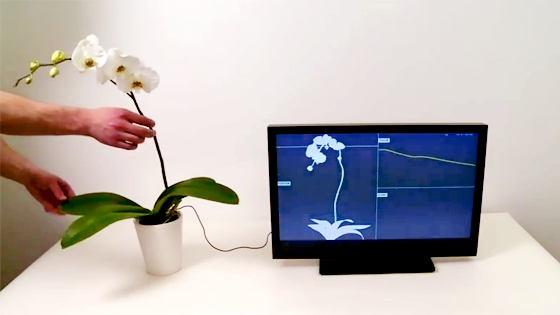Turn living plants into multitouch interfaces. Controlling computers with plants. THE FUTURE IS GOOD.
This just seems like the sort of silly shit I’d make up early in the morning, ripped on grease and caffeine. The future is here, it just ain’t evenly distributed. The words of my hero Billy Gibson. Well, shit. If anyone is looking for some of that excess future being hoarded, check out this ridiculousness.
Boing Boing:
“Botanicus Interacticus” is a Disney research project that uses an electrode in the soil of a plant to turn the entire plant into a multitouch interface that can be used to control computers and other devices.
Botanicus Interacticus is a technology for designing highly expressive interactive plants, both living and artificial. The technology is driven by the rapid fusion of our computing and living spaces. Botanicus Interacticus an interaction platform that takes interaction from computing devices and places it anywhere in the physical environment. In particular we are targeting living plants.
Botanicus Interacticus has a number of unique properties. This instrumentation of plants is simple, non-invasive, and does not damage the plants. It requires only a single wire placed anywhere in the soil. The interaction with plants goes beyond simple touch and allows rich gestural interaction. Examples include: sliding fingers on the stem of the orchid, detecting touch and grasp location, tracking proximity, and estimating the amount of touch contact between user and a plant.
Botanicus Interacticus also deconstructs the electrical properties of plants and replicates them using electrical components. This allows the design of a broad variety of biologically inspired artificial plants that behave nearly the same as their biological counterparts. The same sensing technology is used with both living and artificial plants.
A broad range of applications are possible with Botanicus Interacticus technology: designing interactive responsive environments and new forms of living interaction devices as well as developing organic ambient and pervasive interfaces.




